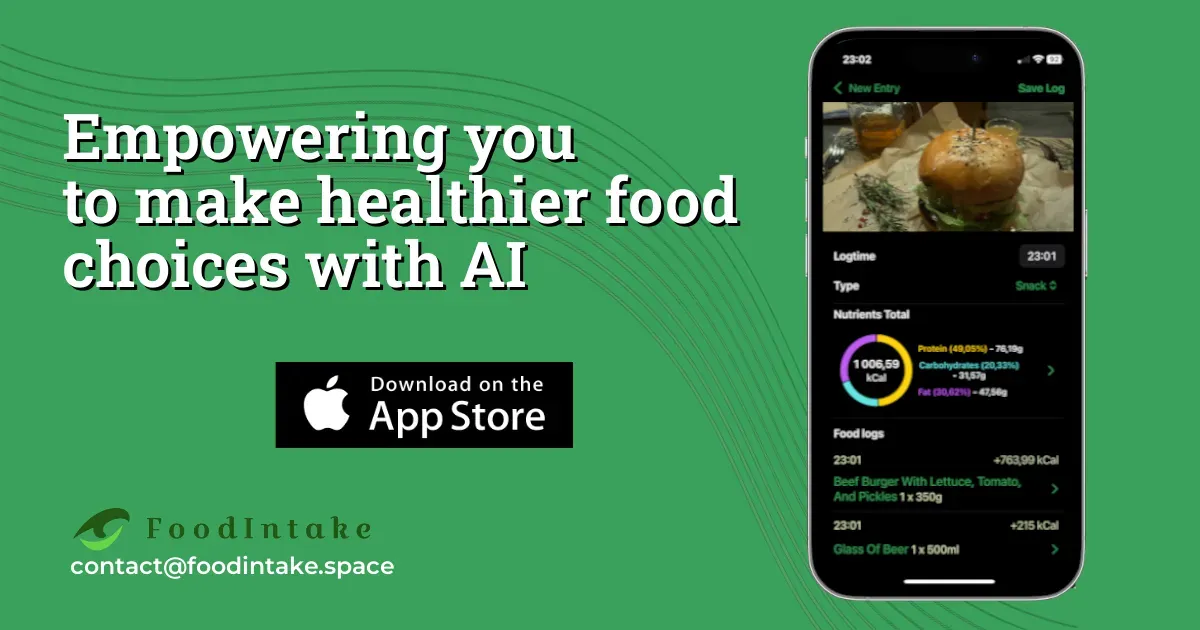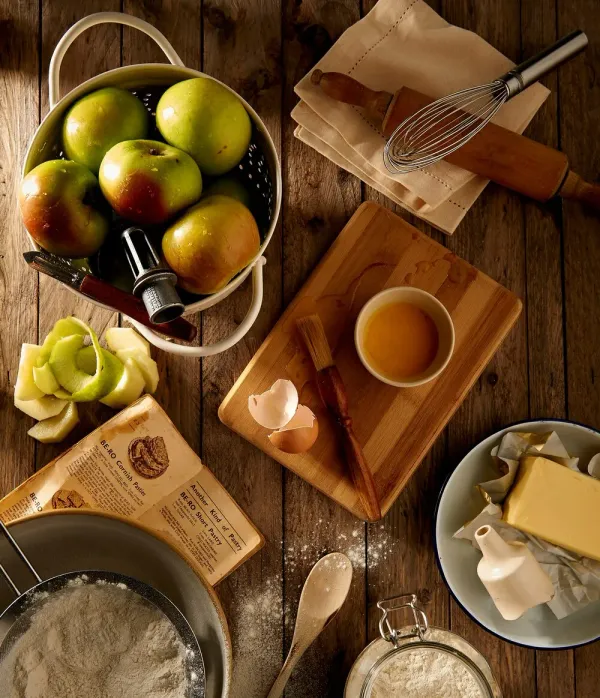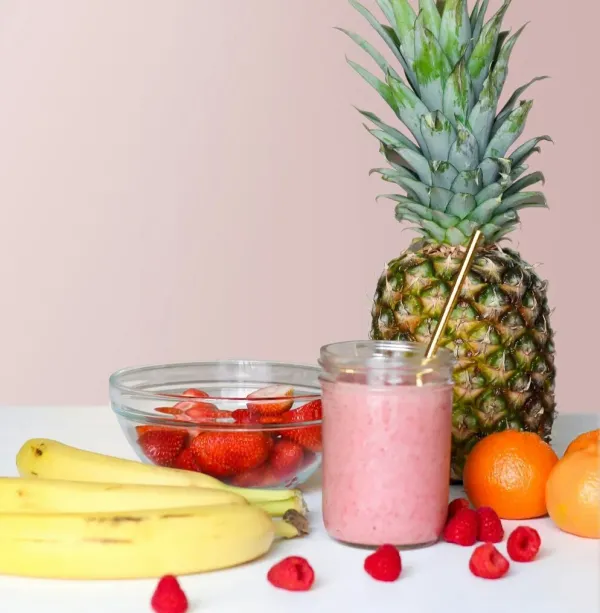Smart Snack Calculator: Your Guide to Healthy Choices

What are Smart Snacks?
Smart Snacks are healthy food and beverage options that meet the USDA’s nutrition standards for schools. They are designed to promote healthy eating habits and provide nutritious options for students during the school day. Smart Snacks must comply with federal requirements set by the USDA. Smart Snacks can include whole grain crackers, fruits, and vegetables, and are a key part of creating a healthier generation. The USDA sets nutrition standards for all foods sold in schools, including Smart Snacks. Note that Smart Snacks are not just for schools, but can be a healthy choice for anyone looking for a nutritious snack.
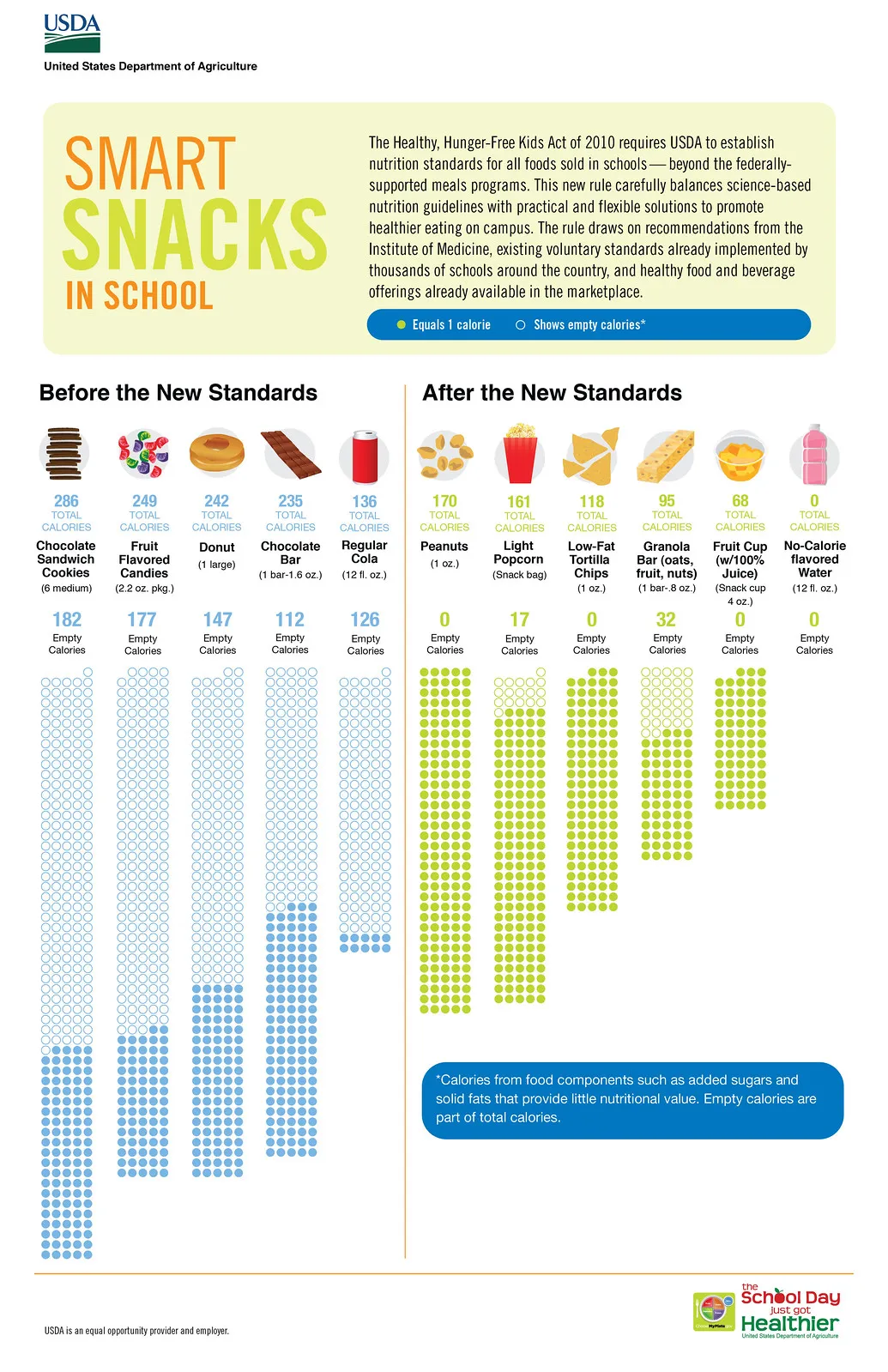
Key Components of USDA’s Nutrition Standards on smart snacking:
- Balanced Meals:
• Meals must offer a balance of fruits, vegetables, grains, proteins, and dairy.
• Meals are required to meet specific calorie ranges based on the age group of the students.
• Users can answer specific questions to determine if their snacks meet the USDA’s nutrition standards.
- Nutrient Requirements:
• Meals must limit saturated fats, trans fats, sodium, and added sugars.
• Ensure adequate intake of vitamins and minerals, such as calcium, iron, and vitamins A and C.
- Whole Grains:
• At least half of the grains must be whole grains.
• This encourages the consumption of whole grain-rich foods, which are more nutritious.
- Fruits and Vegetables:
• Variety of fruits and vegetables, including dark green, red/orange, and legumes.
• Take at least one serving of fruits or vegetables with each meal.
- Milk:
• Only fat-free or low-fat milk options are allowed.
• This includes both flavored and unflavored milk options, provided they meet the fat content guidelines.
- Sodium Reduction:
• Include gradual reductions in sodium content in school meals to promote heart health and reduce hypertension risk.
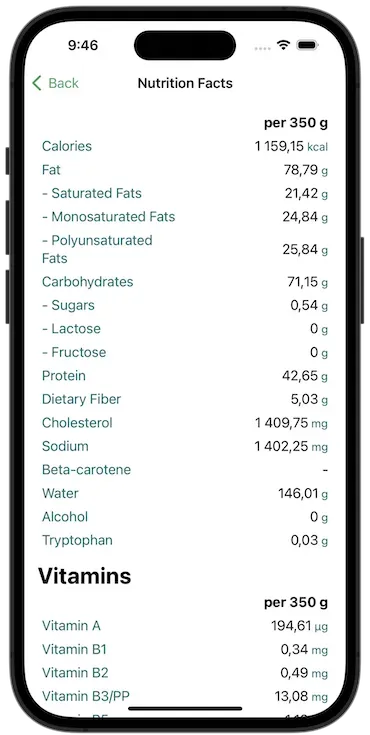
What are Empty Calories?
Empty calories are calories derived from foods and beverages that contain little to no nutritional value. These calories primarily come from added sugars and solid fats that provide energy but lack essential nutrients such as vitamins, minerals, fiber, and protein. Consuming too many empty calories can lead to various health issues, including weight gain, nutrient deficiencies, and chronic diseases.
Sources of Empty Calories
Common sources of empty calories include:
1. Sugary Drinks:
• Sodas, fruit drinks, energy drinks, and sweetened teas are high in added sugars and provide significant empty calories.
• These beverages can contribute to increased calorie intake without providing essential nutrients.
2. Processed Snacks:
• Chips, candy, and baked goods like cookies and cakes often contain high levels of added sugars and unhealthy fats.
• These snacks are typically low in beneficial nutrients.
• Items like french fries, burgers, and fried chicken often contain large amounts of solid fats and sugars.
• These foods are calorie-dense but nutrient-poor.
• Alcohol provides calories but very few nutrients. Mixed drinks with added sugars can further increase empty calorie intake.
Health Implications of Consuming Empty Calories
1. Weight Gain:
• Foods and drinks high in empty calories are often calorie-dense, leading to excessive calorie intake and weight gain.
• This can contribute to obesity and associated health risks, such as diabetes and cardiovascular disease.
2. Nutrient Deficiencies:
• Relying on foods high in empty calories can result in insufficient intake of essential nutrients.
• This can lead to deficiencies in vitamins, minerals, and other vital nutrients necessary for overall health.
3. Increased Risk of Chronic Diseases:
• Diets high in empty calories are linked to an increased risk of developing chronic conditions such as type 2 diabetes, heart disease, and certain cancers.
• Reducing empty calorie intake can help mitigate these risks and promote better health.
How to Avoid Empty Calories
Use FoodIntake Smart Snack Calculator to find healthy options that meet your needs. Compare with your previous options by seeing how much minerals and vitamins you get from new alternatives.
1. Choose Nutrient-Dense Foods:
• Opt for whole foods such as fruits, vegetables, whole grains, lean proteins, and healthy fats.
• These foods provide essential nutrients along with the energy needed for daily activities.
2. Read Nutrition Labels:
• Check food labels for added sugars and solid fats.
• Aim to select foods with lower amounts of these empty calorie sources.
3. Limit Sugary and Processed Foods:
• Reduce consumption of sugary beverages, snacks, and processed foods.
• Replace them with healthier alternatives like water, unsweetened teas, nuts, and fresh fruit.
4. Prepare Meals at Home:
• Cooking at home allows for better control over ingredients and portion sizes.
• It helps ensure meals are balanced and nutrient-rich.
Healthy Snacking Tips
Choose snacks that are low in added sugars, salt, and unhealthy fats. Opt for whole grains, fruits, and vegetables as healthy snack options. Consider the nutrition standards for schools when making snack choices. Healthy snacking can help support a healthier lifestyle and reduce the risk of chronic diseases.Make healthy snacking a habit by incorporating nutritious options into your daily routine.
Creating a Personalized Snacking Plan
Use the Smart Snack Calculator to determine which snacks meet your nutritional needs.Consider your dietary restrictions and preferences when selecting snacks.Create a plan that includes a variety of healthy snack options.Make sure to include a balance of foods from all food groups in your snacking plan.Use the plan as a tool to help you make healthy choices and stay on track.
Overcoming Snacking Challenges
Identify common snacking challenges, such as limited time or unhealthy options. Find healthy alternatives to your favorite snacks. Don’t be afraid to try new snacks and flavors. Make healthy snacking a priority by planning ahead and being prepared.
Putting it all Together: A Healthy Lifestyle
Healthy snacking is just one part of a healthy lifestyle. Combine healthy snacking with regular physical activity and a balanced diet.Use FoodIntake app as a tool to support your healthy lifestyle goals. Make healthy choices a habit by incorporating them into your daily routine. Celebrate your successes and don’t be too hard on yourself when you slip up – just get back on track!


